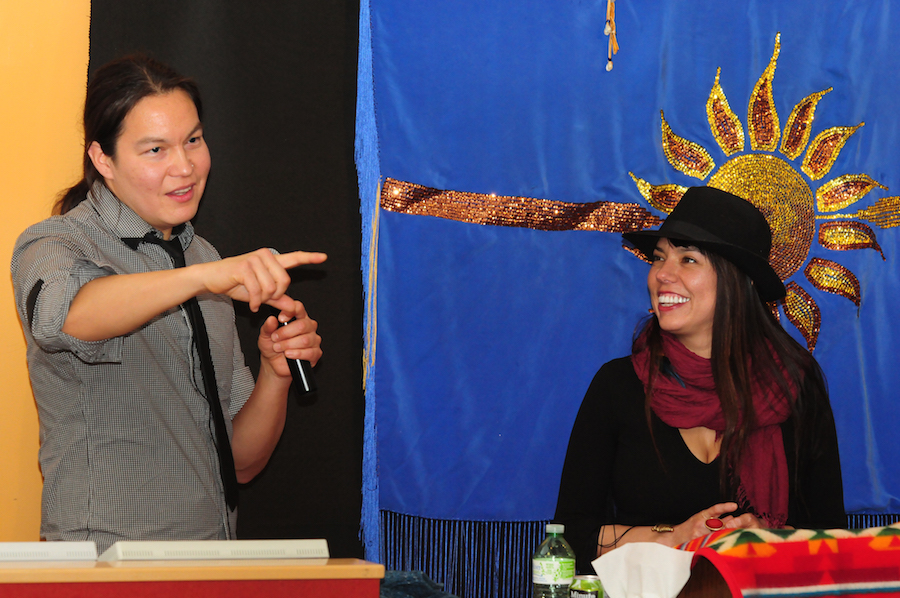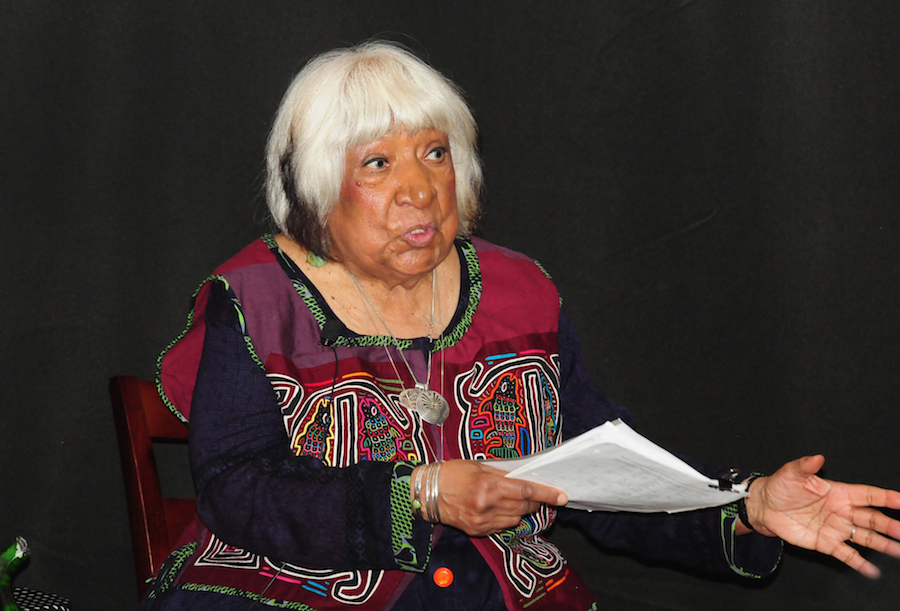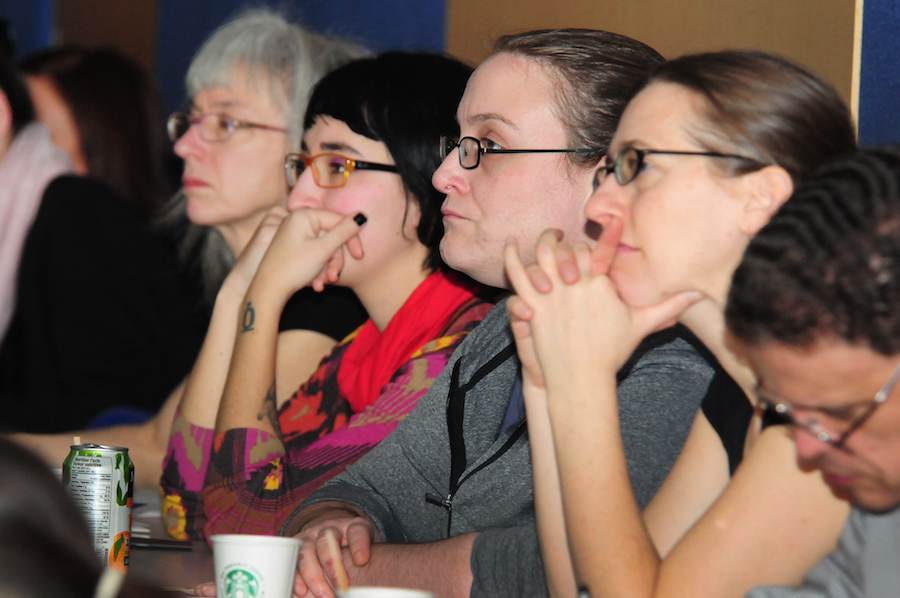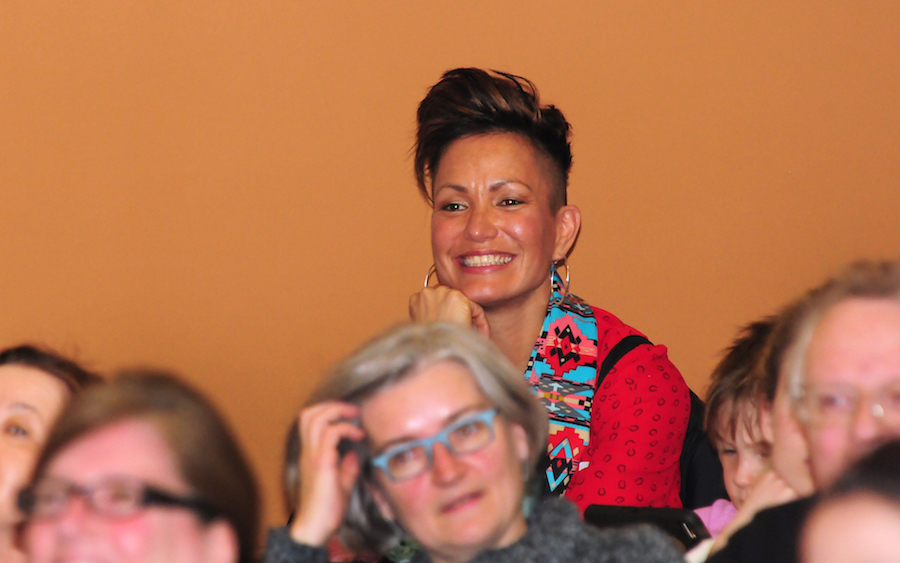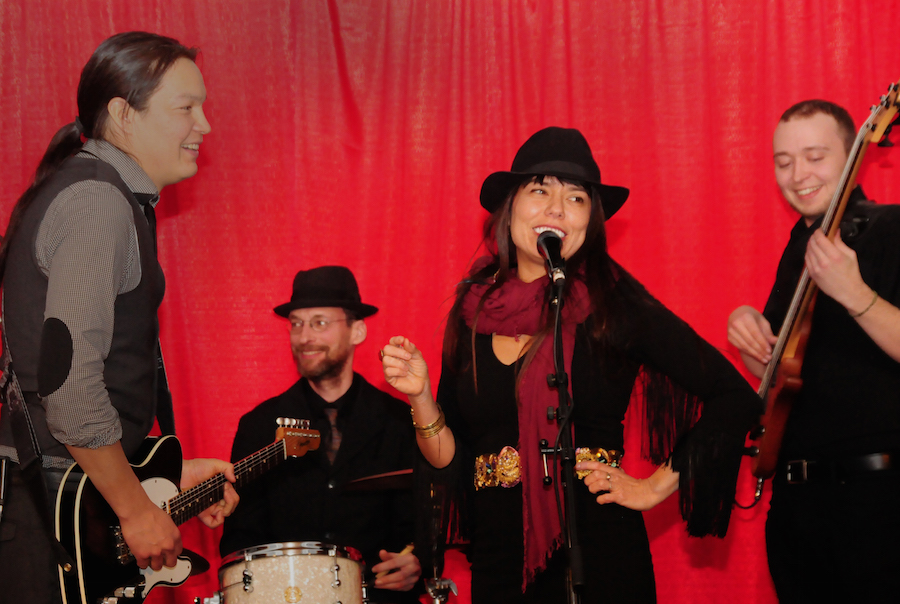The Odawa Native Friendship Centre’s drop-in program has fought more than a few legal battles with the City of Ottawa. The Shawenjeagamik Aboriginal Drop-In Centre, located at 510 Rideau St., is facing closure due to city budget cuts and its funding is set for the chopping block on March 31.
The Odawa centre
Housing First, a new federal-provincial initiative, aims to transition homeless people from the streets into affordable city housing. Under this 10-year plan established by the city in 2013, the centre is not deemed viable for funding.
The centre is appealing, arguing they provide a culturally appropriate environment for its Aboriginal clients that will not be available at other drop-in centres.
Offering three meals a day, laundry facilities, and transition counselling, the centre provides a daytime haven during the week for Aboriginal and non-Aboriginal people who are homeless.
“We’re the only Aboriginal drop-in centre in Ottawa, so how can we be duplicating services?” co-ordinator Carrie Diabo said.
The centre has gone up against City Hall before. When the drop-in centre was slated to apply for a re-zoning permit in 2005, many community residents petitioned against having an Aboriginal outreach centre nearby.
“Their justification was there’s going to be a lot more crime and a lot more drugs,” Diabo said.
After attending a recent City Hall meeting concerning the centre’s appeal on March 11, she said she believes the city prevented media from hearing the decisions being reached.
“When they started talking about the centre and homelessness, they switched to French,” she said. “Almost all the media there were from Ontario.”
She said much of the reporting lacks enough background knowledge to be conducted fairly.
“You can write an article, but do you really know what you’re talking about?” she said.
Addressing ignorance
Carleton professor Allan Ryan, New Sun chair in Aboriginal Art and Culture, hosted the 10th annual New Sun Conference on Feb. 28. Guest speakers included visual artist George Littlechild, Gloria Miguel, actress and co-founder of the Spiderwoman Theatre, CBC reporter Waubgeshig Rice, actress Kaniehtiio Horn, and indie-roots band Digging Roots.
The event this year, Life Lived like a Story, showcased Aboriginal artists from all over North America who have found success through the arts.
Much of the underlying theme of the conference addressed stereotypes and media framing of Aboriginal peoples.
“There’s a huge amount of ignorance out there,” Ryan said. “People are not learning about Aboriginal culture in Canada . . . apart from ‘yes, there were Aboriginal people here, and they helped the settlers get settled.’ Then somehow, they disappear from the narratives.”
For the past decade, the New Sun Conference has been trying to address this on-going problem by providing these counter-narratives to bridge the gap between non-Aboriginal and Aboriginal people in Canada.
Healing narratives
Littlechild said he sees himself as a storyteller and educator more than a visual artist.
“It is very important that we tell our stories,” he said, adding non-Aboriginal people have been telling their stories for them for so long.
His role as a teacher and advocate resonates in his work. While explaining the meaning behind his series on residential schools, he talked a lot about his collection of family photos, many featuring his biological parents during their time at these schools. He could pick them out in the photographs but all the other children where nameless.
“I wanted to give them their dignity back,” he said.
Littlechild said rediscovering Indigenous identities in Canada, along with his own, continues to inspire his art today.
As an actress, Horn is best known for her roles in the Netflix series Hemlock Grove and Defiance, and commented on a recent audition season in Los Angeles.
“I’m tired of telling other people’s stories that I don’t even care about,” she said. “I’m ready to tell my own stories now.”
Miguel talked about her own experiences as an Indigenous woman trying to bury her identity.
“I was trying to get away from all the hurt and the pain . . . I was trying to be human,” she said.
It was her daughter who taught her to embrace her culture again and tell stories through her plays.
“I hadn’t heard those drums in 25 years and that’s why I started crying,” Miguel said. “A year after that powwow, I made a trip back to my roots.”
With renewed strength, Miguel has been teaching audiences the importance of Indigenous peoples telling their own stories all over New Zealand, Australia, Canada, the United States, and Europe for the last 39 years.
“It’s not that they didn’t know how to tell stories before or that they didn’t know how to write . . . Those stories were repressed and they were told they had no value,” Ryan said.
Sharing their voice
Presenters Raven Kanatakta and ShoShona Kish, husband and wife duo of Digging Roots touched on the importance of telling one’s stories as an Aboriginal person.
“There’s this heavy thing called oppression in my community . . . you can see it on the faces of the kids,” Kanatakta said. “You have to have your teachings.”
Digging Roots tells their stories through music, incorporating traditional Indigenous song lines that create a reflection of the landscape through music.
“Music becomes the language that we use to understand the world,” Kish said.
This connection to the land is universal not only in Indigenous cultures, but for all people.
“No matter where you travel, people are connected to the land and feel that heartbeat,” Kanatakta said.
Ryan remarked on the inherent power this conference has to change public perceptions about Indigenous peoples. He said he remembers when the late Joy Harvie Maclaren first came to the New Sun Conference.
“She walked in the room—and she’d been about 90 per cent blind since she’d turned 70—and said, ‘Something’s happening here,’” he said.
Much of this speaks to the atmosphere of the conference.
“People get inspired by that conference and go home and dig things out from the basement because it’s all about creative energy,” he said.
Media framing
For many people, possibility and hope are not the first words to come to mind when they think about Indigenous groups. Much of this negativity is perpetuated by the way mainstream media tells stories, according to Ryan, including the recent coverage of the Shawenjeagamik Drop-In Centre’s loss of funding.
“There’s a creative energy that non-native people had no idea was there, largely because the stories in the media are about Aboriginal victimization,” Ryan explains.
He cites a recent example concerning the People’s Gathering on Missing and Murdered Indigenous Women and Girls hosted at Carleton.
“The Dean of Arts was invited to speak at that Friday morning and then came to the New Sun Conference on Saturday, and his blog this week contrasted the two in terms of overwhelming despair with a powerful sense of hope, as he put it,” Ryan said.
Kanatakta also addressed Canadians’ negative perception of Aboriginal peoples.
“There’s an undertone of racism in this country and people have a tough time realizing it,” Kanatakta said.
Despite this obstacle, he said non-Aboriginal and Aboriginal people can come to a common ground. He believes by trying to find commonalities instead of our differences, the gaps can start to be bridged.
Ryan remembered a student who had attended the conference in past years.
“He said, ‘I thought they were going to be talking about their life over there . . . and within five minutes they were talking about my life,’” he said.
As awareness grows about media framing, Ryan said the next step involves sharing knowledge to prevent victimization.
“It comes back to Indigenous scholar Thomas King. . . ‘You can do what you want with these stories, but don’t say in the years to come that you would have lived your life differently if you’d heard them,” he said. “You’ve heard them now.’”


